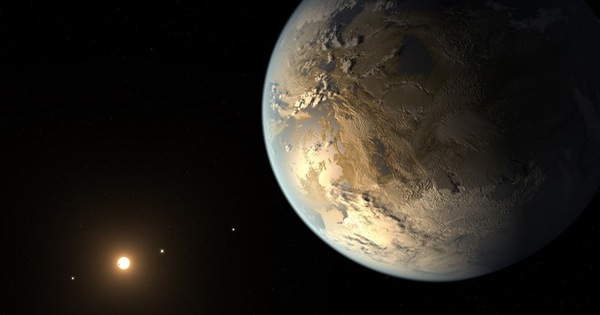The effects of a warming climate on the Alps are visible from space, as snow-white mountains become increasingly colonized by greenery.

Mont Blanc mountain in the French Alps. Image: Philippe Desmazes/AFP/Getty
Research published in the journal Science June 2, using high-resolution satellite data, shows that the area of vegetation above the tree line (the altitude boundary over which no trees grow) in the Alps has increased by 77% since since 1984. “The shrinking of the glaciers also indicates global warming in the Alps. The increase in plant biomass is a big change,” the team commented.
Rising temperatures and rainfall are lengthening the plant’s growing season, causing the trees to grow denser and taller. The loss of less than 10% of snow cover on the tree line is significant, the scientists say.
“The scale of the change in the Alps is extremely large,” said Professor Sabine Rumpf at the University of Basel, the study’s lead author.
The mountains are warming twice as fast as the global average. Greening the Alps increases carbon sequestration, but this may not be enough to offset the negative effects, including permafrost melting, less snow to reflect sunlight Heaven and the living environment of living things decline.
According to Rumpf, the increase in the number of trees growing at high altitudes could threaten many species of plants featured in the Alps, which are well-adapted to harsh conditions but are not highly competitive. When conditions become favorable for growth, they will be overrun by common and vigorous plants from lower elevations. “The unique biodiversity of the Alps is under great pressure,” Rumpf said.
In about 10% of the area the team measured, snow cover above the tree line was significantly reduced, excluding glaciers and places below 1,700 m. This is still a worrying trend, the researchers say.
“Previous analyzes of satellite data have not shown such a trend. This may be due to insufficient resolution of satellite images or because the study period was too short,” said Professor Antoine Guisan at the University of Science and Technology. learn Lausanne, said.
Satellite data did not detect a change in snow thickness, but ground-based measurements have shown thinner snow in low-altitude areas for a number of years.
As more areas of the Alps go from white to green, the rate of global warming and snowmelt increases. “Bluer mountains reflect less sunlight, causing further warming, further loss of snow cover and reduced reflectivity,” Rumpf explains.
Warming is also causing glaciers and permafrost to melt, which can lead to more landslides, rockfalls and mudslides.
Thu Thao (Follow Guardian)
at Blogtuan.info – Source: vnexpress.net – Read the original article here



